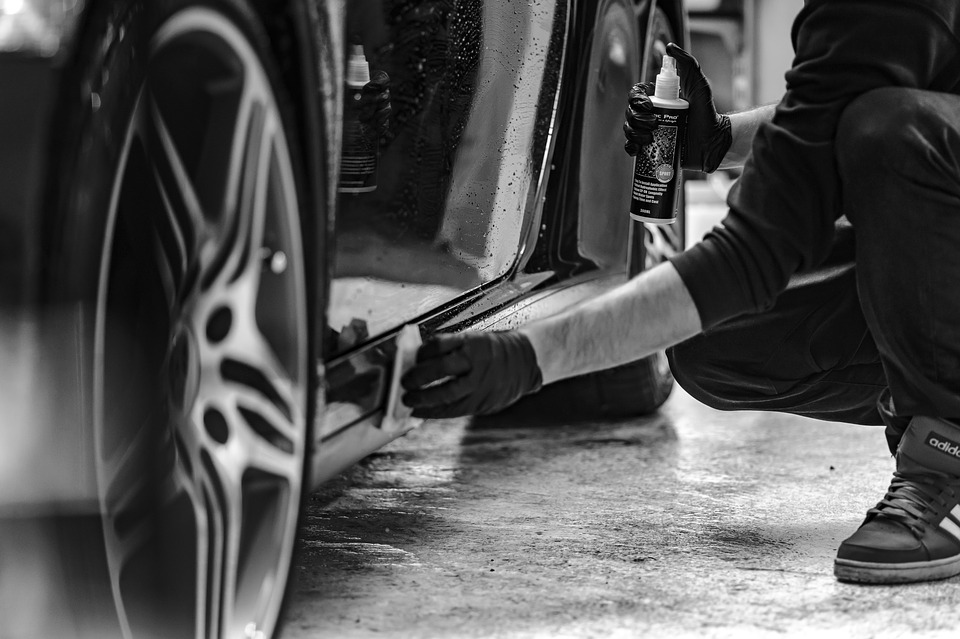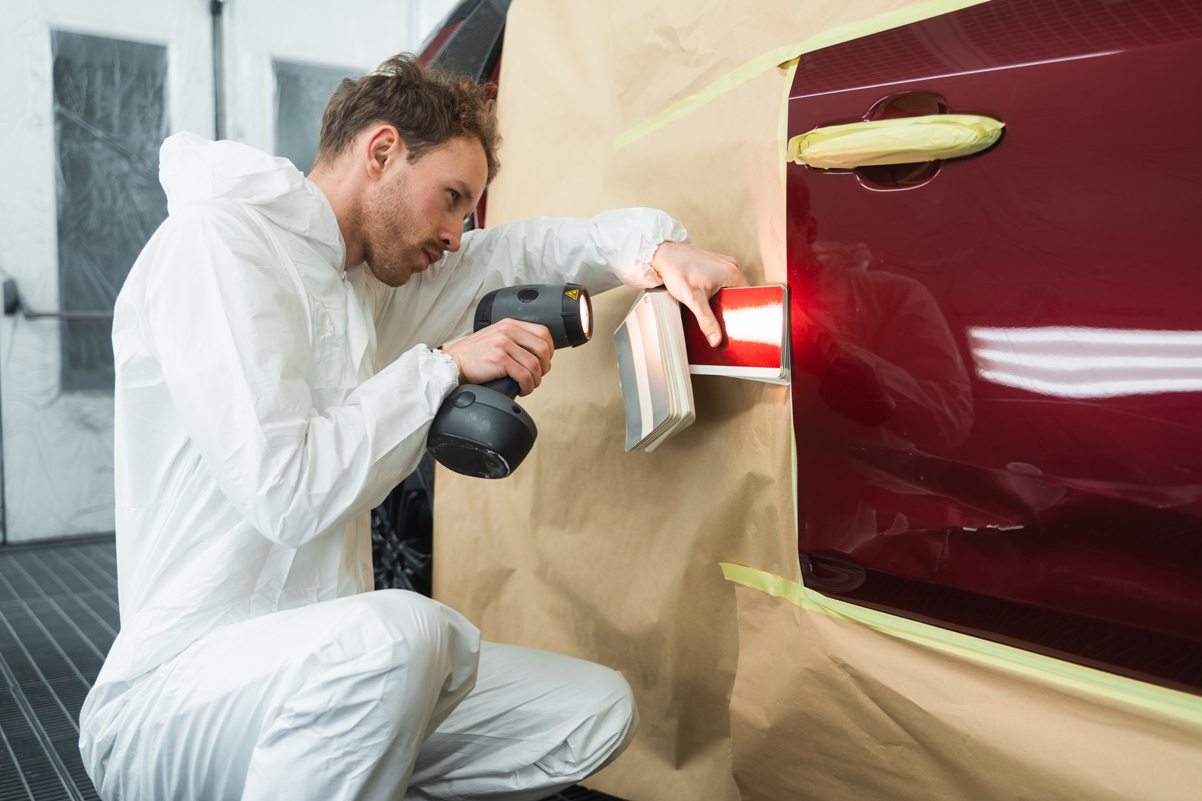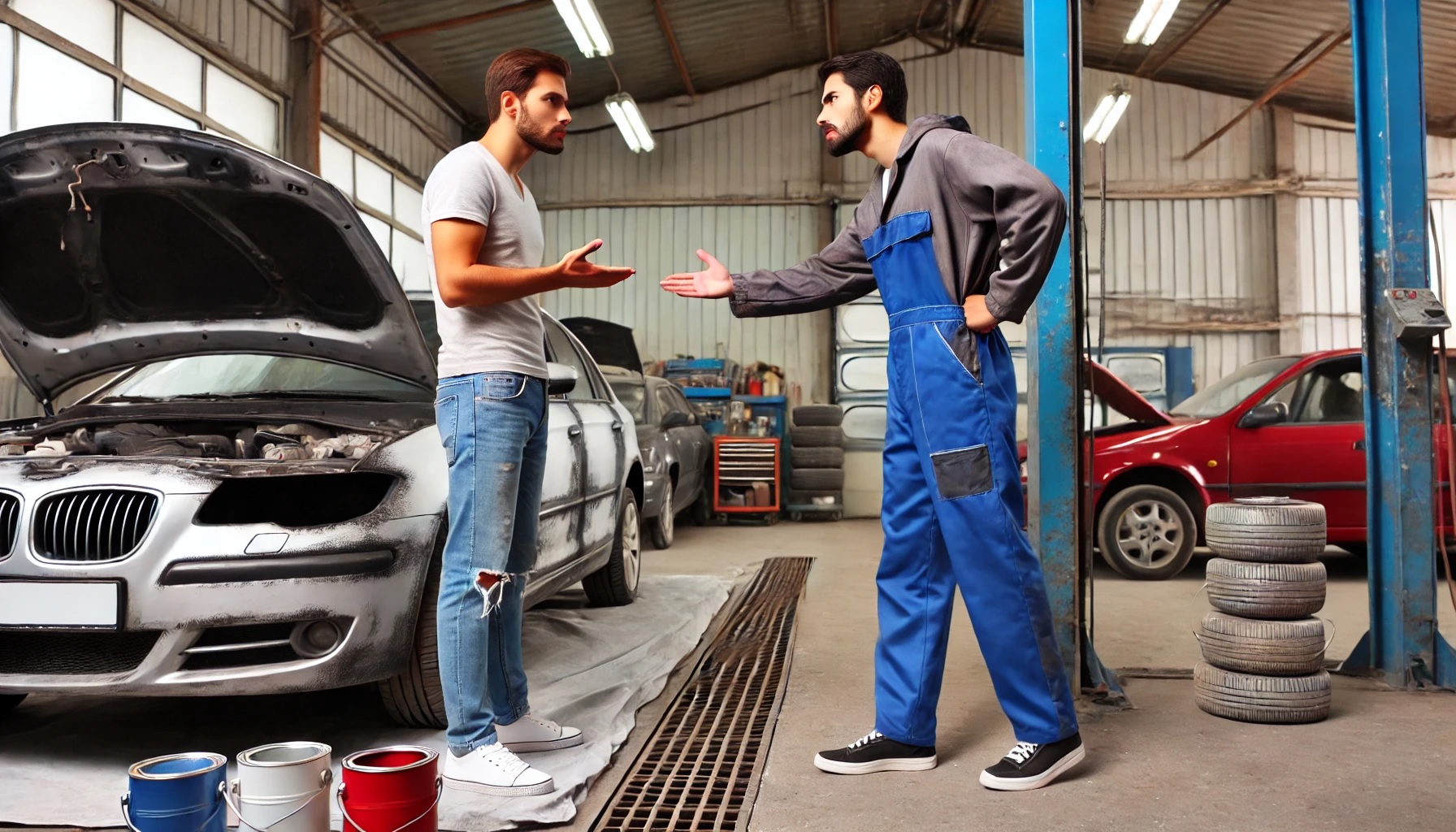Undoubtedly, ceramic coatings, or nano/glass coatings, have taken the automotive aftermarket by storm. Let me refer to these products, by generic term “ceramic coatings” further in the article. Dozens of brands have appeared, and each of them claims the best results, ultimate gloss and protection, which lasts for years. Some colleagues of mine, those who are not coming from the detailing business, but from regular bodyshops, have been asking my opinion about ceramic coatings. From my humble opinion, ceramic coatings came here to stay, and there are some very decent brands, which deliver on their promises. Vehicles treated with such coatings look better than new, are easy to wash, and such a treatment raises the overall vehicle’s value. However, I do believe that not all the customers need ceramic coating, and that there is a big information gap. I hope to clarify some questions and bust some myths in this article.
What is a ceramic coating?
Ceramic coating is a liquid polymer based on SiO2 silica, which is applied to clean and polished vehicle clearcoat. The bond between the coating and clearcoat is not chemical, but mechanical. It means that there is no chemical reaction between the coating and the paint/clear. The particles of ceramic coatings usually are much smaller than the pores of a paint/clearcoat, therefore they penetrate the paint film, and when cured, create a strong bond on nanomolecular level between the coating and automotive clearcoat. This is why many brands add the term “nano” to their products description.
Lasts forever?
Ceramic coatings are not permanent, but semi-permanent, meaning that after some time, which varies from producer to producer, it will wear off and loose its properties. In order to prolong the protective properties, a customer will need to visit a detailing shop for so-called maintenance, which varies from once per two years to a few times per each year. Nano or ceramic coatings are harder than traditional car paints and do provide better water and dirt repellence, but it is not like apply-once-and-forget system.
Hard like diamond?
Most of the brands in protective coatings claim that their product withstands mechanical stress (scratching) equal to 9H. Customers and applicators use this figure all the time, without actually realizing what it means. Personally I didn’t like Physics at school, but thanks to my studies in the military school, I have some understanding of hardness as a physical parameter (the rest skills acquired remained completely unused). Hardness is not measured in just one way, and, in fact, there are several methods to test and measure material’s hardness (coatings in our case). The difference between the measurement systems is substantial. For example, if you use Mohs measuring system, then 9H would refer to almost the highest level of hardness, which is the level of corundum (a form of aluminium oxide). The highest level is 10H, which is a diamond. I wish there would be a coating, which could deliver such protection, but it is not achievable for the time being. There is a simple test to check the credibility of the statement. If you take a dried crystal of any ceramic coating and try to scratch the glass surface, you will realize that it is not possible to leave a scratch. Glass is much harder as a material, and, as we know, only diamond (10H hardness), can scratch and cut a piece of glass. So, what is this 9H measurement on ceramic coatings ads? In fact, there is another measurement system, which is used to measure hardness of a material, and it is called Wolff-Wilborn test, or simply pencil test. This system was initially developed in order to standardize production of pencils. Probably you have noticed already that all the pencils carry a certain marking, like 2B, HB, H1 etc. So, according to this system, a surface which cannot be scratched by pencil with 9H hardness at 45 degree angle can be characterized as 9H hard. Of course, this measurement has nothing to do with diamond. Therefore the promised 9H hardness is nothing more than a marketing trick.
Clearcoat vs Ceramic Coating
It is very important for a vehicle owner to understand what additional protection properties would a ceramic coating offer to his vehicle. In fact, the customer will be paying big money exactly for the difference in scratch resistance between the clearcoat and chosen ceramic coating. But are the parameters of the equation always the same? Of course not. Simply because clearcoats from different car manufacturers are not the same either. If you compare the clearcoat’s hardness of the European, and, especially German vehicles, with the Japanese vehicles, you will realize that the German clearcoats are much thicker and harder. Therefore, if you apply a ceramic coating on a Japanese or Korean car, the improvement of scratch resistance properties will be noticeable. If you do the same application on certain BMWs, for example, the difference might be negligible. Of course, my explanation is too general, and the only way to understand how hard is the clearcoat – try polishing it. Key scratching test is not advisable. From our experience, the highest improvement of hardness on a vehicle after ceramic application will be up to 2H. Not more.
Car accident. Now what?
While it is great to discuss how shiny will a vehicle look after ceramic coating’s application, let’s not forget that ceramic coatings do not protect from accidents. Sorry if I ruined your day. I wish there were such coatings (or maybe not, what are we going to sell then to bodyshops…). In reality though, vehicles with ceramic coatings are actually much harder to repair. This is a very important piece of information, which coating applicators usually never give to their customers. Let me explain why actually the repair of the coated car is a headache for car painters.
Imagine that a vehicle protected by ceramic coating has an accident, where its rear door is damaged and requires a paint job. Very few people, besides car repair professionals, know that in many cases in order to make the paint job invisible for the human eyes, a certain procedure – blending or fading out – must be done. This process is necessary to “trick” human eye into believing that there is perfect paint match between the painted part and the adjacent areas. In our case most probably rear fender and front door will be also partially sprayed. I don’t want to get into details of the blending process, because for the car painters it is a part of their everyday job, but for the common car owner it is unnecessary information. Simply speaking, a car painter, who is performing the blending process on a coated vehicle, will need firstly to remove completely ceramic coating from the adjacent parts. This must be done in order to avoid delamination of the new clearcoat from the surface covered by ceramic coating. Normally we apply a blending thinner to soften the old clearcoat and avoid visible border. However, ceramic coating is invisible, and, if a painter doesn’t even know that the vehicle was protected, it will definitely cause problems.
How to remove ceramic coating?
One can remove ceramic coating by sanding (which is okay on the repaired part, but not on the adjacent parts) or by polishing. The problem is that there is no visible sign whether the ceramic coating has been polished out or not. In fact, all the risk and extra work lie on the shoulders of a car painter. Will he get paid for this additional task? I don’t think so.
The very minimum what a professional detailer and ceramic coating applicator should do is to keep customer informed what should be done if the vehicle has an accident. He must provide all the information how the coating can be quickly and safely removed as well.
Conclusion
As I already mentioned, ceramic coatings have become a part of the modern car care industry. Taking into account that car appearance is about 30% of its value, protecting a car will certainly pay off. On the other hand, not all vehicles will benefit from ceramic coating in the same way. In many cases, regular waxing of a vehicle will help in keeping the car’s clearcoat bright and shiny without spending hundreds of hard-earned euros or dollars on ceramic coating application. Another important consideration is the difficulties ceramic coatings may cause during the process of accident repair. It is still unclear who should bear additional costs of the refinishing job. I also strongly recommend car refinishing shops to consider offering application of ceramic coating as an additional service to the customers. Instead of complaining why customers go to detailing shops, turn lemons into lemonade and earn additional income.








